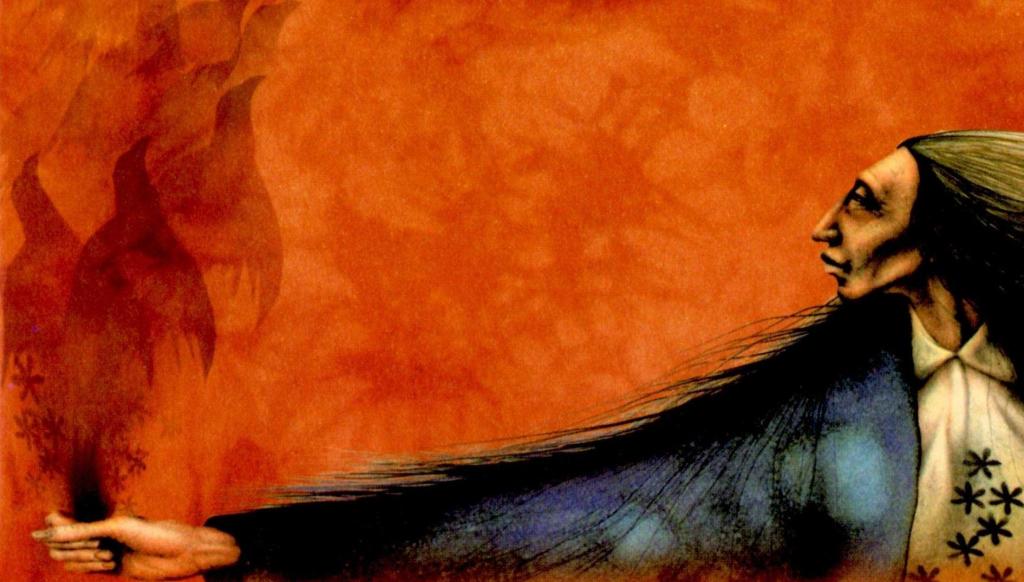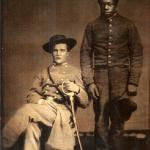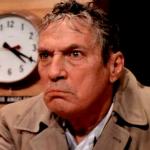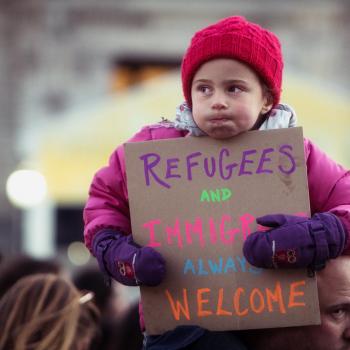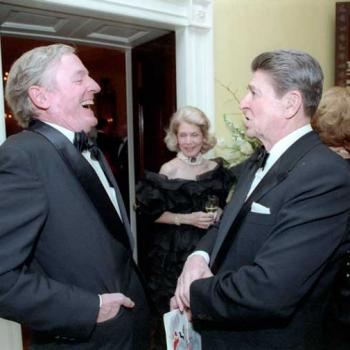The idea of femininity as “receptivity,” is very popular among Theology of the Body promoters. This idea comes with several presumptions: that femininity is a real essence of nature, that talking about femininity means talking about women, that femininity exists in complementary relation to masculinity, and that all humanity can be divided into these two camps, which could also be termed “women and men.”
Or, perhaps, not so much “women and men” as “WOMAN and MAN.” Note the shades of difference in saying “woman is receptive” versus “women are receptive.” In the latter case, one could be asked to defend one’s statement by inductively reasoning on the basis of a representative group of women. One would also, then, have to explain not only that yes, these women are receptive, but also how one managed to figure this out. Which could get awkward.
Talking about “woman” relieves one of the burden of proof, as well as the embarrassment. It allows one to defer the discussion from individual women, who live as embodied personal subjects in the world, to an idealized or normative concept of “woman” without any particular reference to lived reality.
Now the emphasis on receptivity may be more echt Hans Urs Von Balsasar than echt Karol Wojtyla – Wojtyla tends to emphasize mutuality over difference – but either way, it’s everywhere in contemporary ToB talk.
It sounds nice. It’s definitely a lot less impersonal and reductive than the old way of regarding femininity as passivity.
But what does it really mean?
Christopher West, ToB popularizer par excellence, recently posted on his Facebook page a quotation from his book Theology of the Body for Beginners:
“The woman’s body primarily tells the story of receiving divine love while the man’s body primarily tells the story of offering that love, of pouring it out.”
Wait, what? Aside from the question of who “the woman” is (one particular woman? Women conceived of en masse? His imaginary woman?), everything about this quotation is reductive and wrong.
First, it reduces the female body to its reproductive function. What about eating? The process of digestion? Don’t try to tell me that has no theological importance, if you’re Catholic. What about work? What about art? Friendship? Sisterhood? Prayer? Fighting for justice?
But even if we stick with the reproductive functions, when it comes to offering love and pouring it out, any mother’s body has experienced this much more violently, more exhaustively, than most men – other than Jesus, perhaps – could ever realize. Everything about the reproductivity of a female body has to do with offering up and pouring forth. We release an egg, we spill our blood on a monthly basis. Sometimes our bodies conceive, and then miscarry. Sometimes we carry our babies to term, sustaining them with our bodies, pouring our own blood into them, before pouring them forth in a gush of new life, blood and water. Even the process of ovulation is connected with the flow of fertility, as any NFP practitioner knows. We produce milk to feed our babies. Sometimes it trickles out and wets our shirts. It’s messy, often painful, always some kind of offering.
Considering all this, defining women via receptivity means bracketing out whole categories of deeply personal, bodily, spiritual, and intellectual activity, bracketing out even most of our reproductive biology, and looking at women simply in terms of our capacity to be sexually penetrated. Sorry if that is blunt, but it’s pretty clear that this is the underlying presumption.
Our Bodies’ Stories
I discussed this with a group of women who had found the West quote – and the whole ideology behind it – similarly unappealing. Here are what a few of us had to say about the real stories our bodies tell – but these are just the CliffNotes versions:
My body tells a story of balancing all my body weight in two square inches of satin every day for hours and being generally ripped because it’s my job. If I wasn’t a dancer I would look like my mans Hagrid from Harry Potter.
My body tells the story of being a shorter lady who loves ice cream more than anything and who has had to learn that it’s ok to take up space on this planet. Of learning that exercise isn’t supposed to be punishment for not conforming to society’s expectations of side but rather, a way to enliven and strengthen the self. Of holding anxiety inside and feeling powerless when it eventually leaks out. Of finally learning to love the skin I’m in and realizing what a gift it is to feel alive and have energy to do the things I want. Of pregnancy and loss and feeling simultaneously broken but strong.
My body tells the story of a former athlete, covered in stretch marks but with a residual muscular stature with hidden self harm scars that are now made beautiful in meaningful and simple tattoos.
My body’s story is covered in scars and periodic episodes of cigarettes smoking and various psychiatric meds. And also it is the story of three children.
My body tells a very complicated, conflicting story. To view it through the lens of society, you wouldn’t find much value. It’s not symmetrical in some ways, and there’s too much of it. But if you look carefully and closely through the lens of experience and truth, it tells the story of a survivor. In my body lies the story of someone who fought an eating disorder, major self harm, emotional and physical abuse; the story of someone who has fought back old temptations when fertility related meds made her gain weight; of someone still figuring it all out, but still surviving.
My body tells the story of how everything went wrong but that just made me a fucking warrior.
My body tells the story of PCOS undiagnosed until age 27 and 10 cycles of fertility meds over the next 2 1/2 years. My arms carry the battle scars of an orthopedic surgery and countless rounds of vet tech vs scared fractious cat.
I don’t know what my body says. Mostly it creaks and cracks.
My body tells the story of knowing how to dance, ride, fight, and recover from addiction. It tells the story of drinking too much, cutting in secret, bearing six children, raising three, wading in the water, bounding up mountains, eating all the apples they told me not to eat.
Look, everywhere around you are bodies that are stories upon stories, no one of them like the other. They can’t be summed up in a single word or phrase, and even these statements might be what we’re saying to hide the true story, that maybe only God knows. But the religious experts don’t seem to want to talk about these stories. They want to write over us as a crude palimpsest, and afterwards read us as only one thing. They hunt for the divine in us only where they have written.
But we have far more tales to tell.
image credit: /twistedpositions.files.wordpress.com/2010/09/wise-one4.jpg

